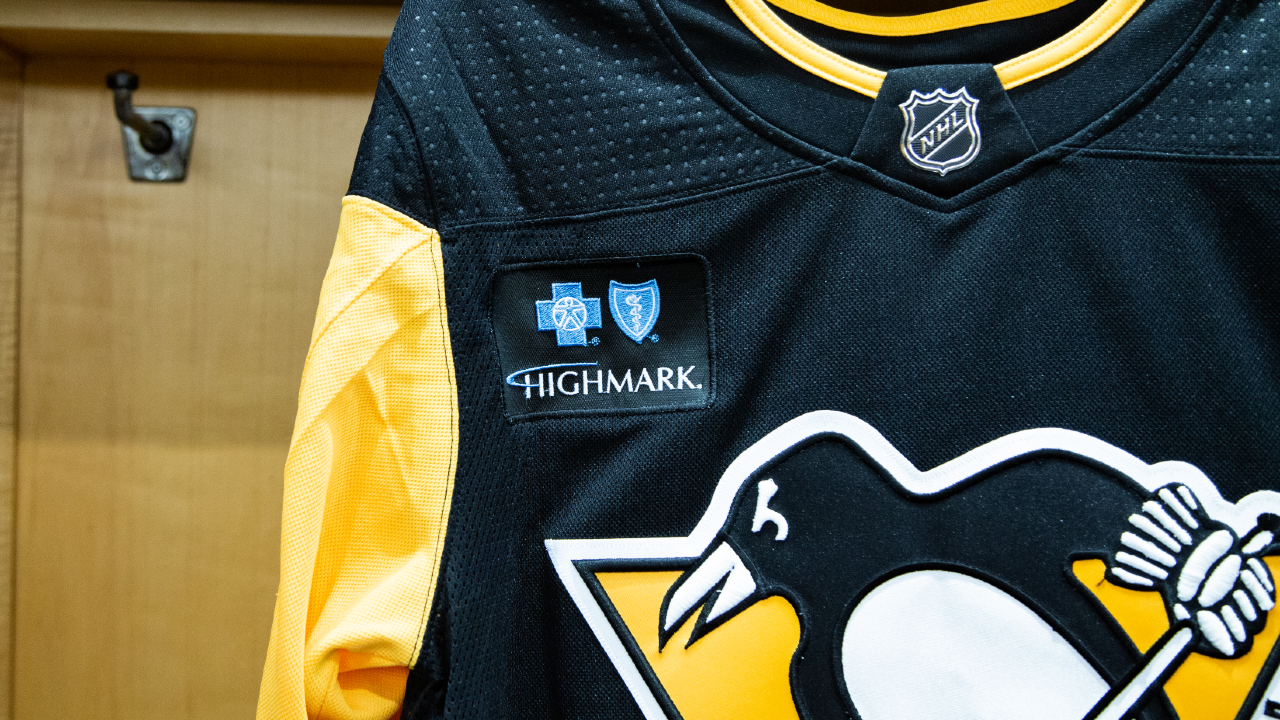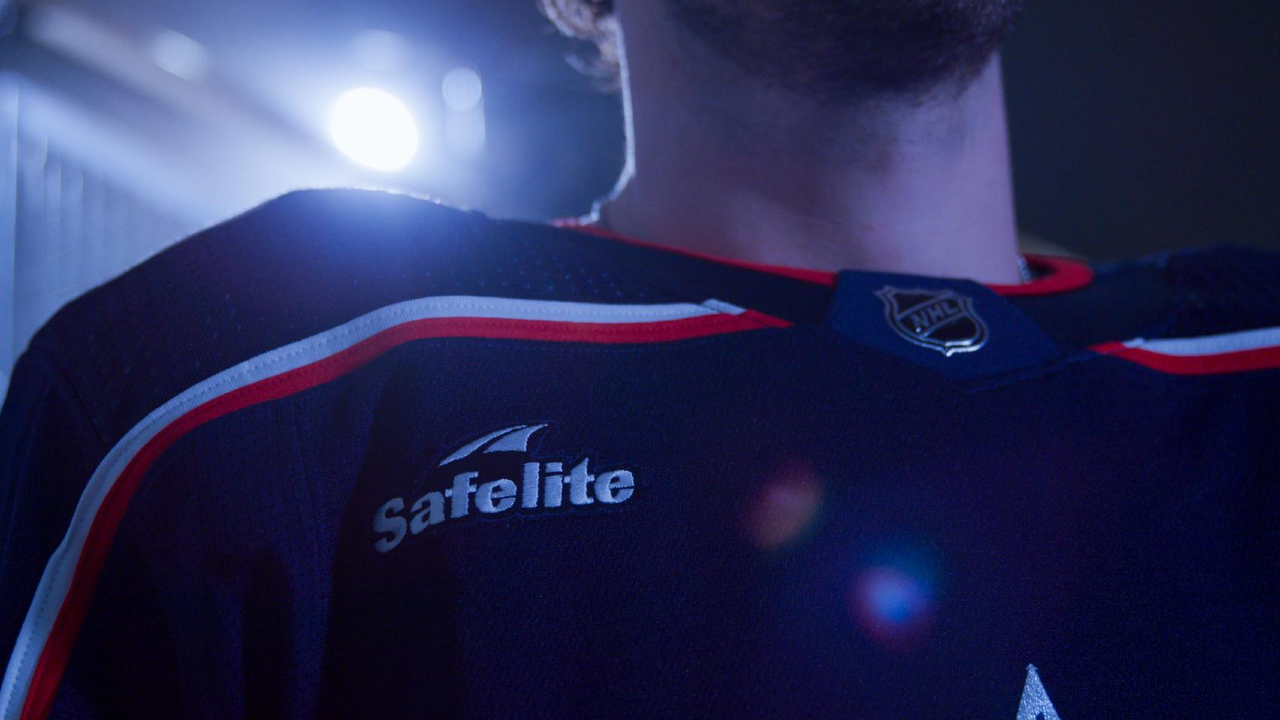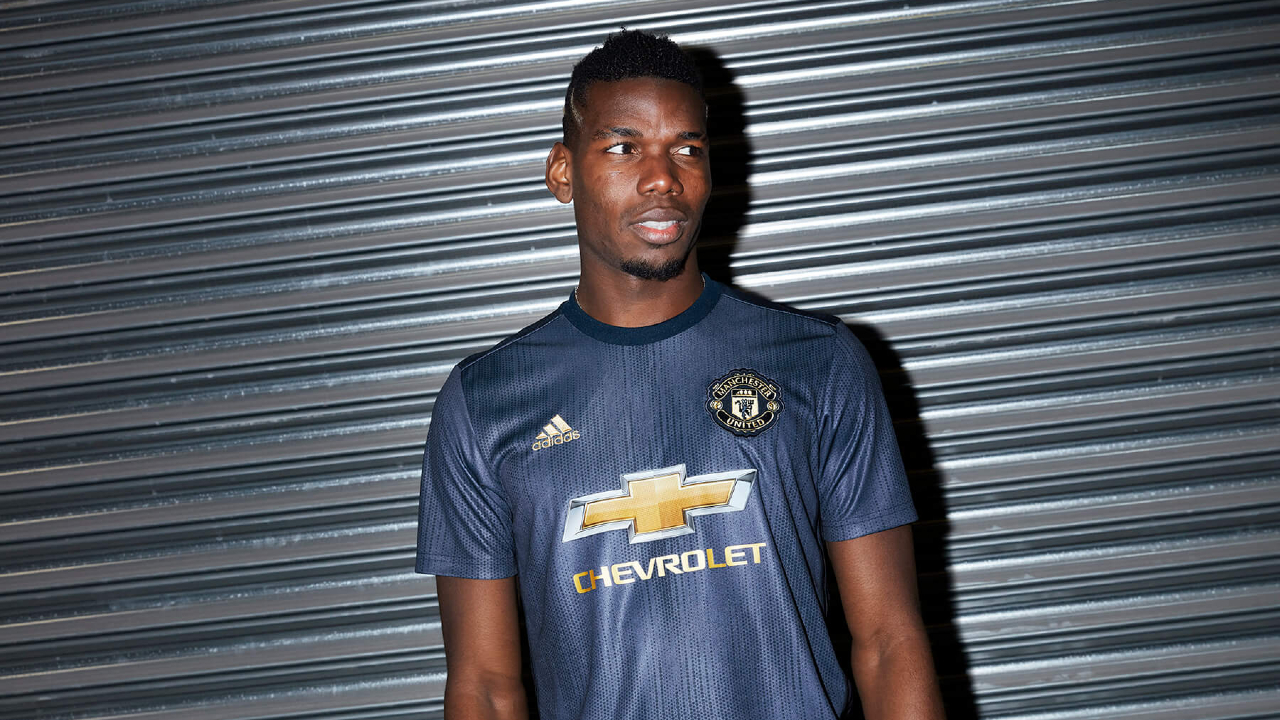When the NHL’s 2022-23 season rolls around, expect most, if not all, jerseys around the league to have a new addition stamped upon them, only a few inches wide but more far-reaching in their impact on the league’s clubs.
The Washington Capitals became the first NHL team to announce a “jersey patch partner” late last year, their multi-year deal with Caesars Sportsbook reserving space for the betting company’s logo on the Capitals’ home and third jerseys for the coming campaign and beyond. The Blue Jackets and Penguins joined the fray just recently, Columbus announcing last month that glass-repair company Safelite will feature on their home, away and third jerseys next season, Pittsburgh announcing this week that healthcare company Highmark will feature on their home threads.
The moves usher in a new era of advertisements on NHL jerseys that figures to soon include the rest of the league’s 32 clubs, the league’s board of governors having officially approved the addition of jersey ads last August.
Exact terms of the deals haven’t been disclosed by the clubs. But according to those who helped craft the league's very first one, all signs point to the sums being anything but slight.
“It’s pretty significant,” says Jim Van Stone of the jersey ad deals' financial benefit. Currently the president of business operations and chief commercial officer for Monumental Sports & Entertainment — which owns and operates the Capitals — Van Stone played a key role in securing the Caesars Sportsbook deal for his organization. “There are probably two really dominant opportunities from a partner standpoint, when you take a look at investment levels. I think one is naming rights to an arena. The second one is participation in jersey entitlement. So, for us, it’s a significant deal, it’s a significant opportunity that the league’s opened up for teams on the local level.
“I think the economics really rival naming rights partnerships for arenas.”
For frame of reference, the Capitals’ partnership with Capital One for naming rights to the team’s arena in D.C. is reportedly worth $10 million annually.
Keith Wachtel, the NHL’s chief business officer and senior executive vice president, says he believes that figure is correct, as is the estimation that NHL clubs will earn between $5 and $10 million annually from their jersey ad deals.
“I think that’s accurate — obviously, every deal is going to be different, every market’s going to be different,” Wachtel says. “One thing to keep in mind is they’re using the jersey for generally new partnerships, which is incremental revenue. They’re using it as part of a broader relationship. It’s not just for the jersey — it includes other assets in the building, media assets, hospitality, all of that. So I think that range is accurate when you look at the all-in.”

Key to landing within that expected range is the fact that the league has opened the door for teams to sign multiple jersey ad deals, to partner with different companies for their home and away jerseys. Which means a different approach for selling space on either sweater — while the Blue Jackets signed on to feature one company’s logo on three different jersey iterations, the Capitals and Penguins are opting for separate partnerships for their home and away threads.
“It allows us to really identify the key motivations for a brand that we partner with,” Van Stone says of that difference in approach. “[For] some people, it’s about that hometown feel, the hometown connection, and then for others it’s about the away jersey being really a North American platform, because the teams are going to be playing in 31 other markets outside of their home market on an annual basis.”
Wachtel sees the potential reaching even further, beyond those 32 markets alone.
“You’re also looking at global brands, especially for us. We are a global sport, with a significant amount of players that come from overseas, a huge number of All-Stars that come from overseas. We’re playing games overseas. So, as you look at it, this is not just about the local market,” he says. “While there certainly will be opportunities for our clubs with local market companies, health care, financial services and the like, I do see some of our clubs looking at global brands that are looking for the global exposure that the NHL can provide.”
Beyond the differing approaches in how many advertisers a team partners with, there’s also potential to go different routes in terms of how the ad patch will be displayed — the league’s program stipulates the advertiser’s logo must fit within a three-inch-by-3.5-inch patch, which can be positioned on the right-hand side of the chest, the left-hand side of the chest, the right shoulder, or the left shoulder, depending on a particular team's jersey design.
The NHL long seemed resistant to the idea of bringing in jersey ads — commissioner Gary Bettman famously said in 2015 and 2016 that the league would have to be dragged “kicking and screaming” into allowing them in the NHL — but the situation appears to have changed given the significant financial impact of the pandemic. In the wake of the early signs of that impact, the league has been focused on creating new revenue streams for teams to pursue, says Van Stone, beginning with helmet ads and forms of virtual broadcast signage, and now extending to jersey ads.
While the greater wave of announcements on this newest front has yet to come, the early reaction from fans has been largely that of disappointment, with some pointing worryingly to comments like those of Carolina Hurricanes owner Tom Dundon. Speaking with The Athletic’s Sean Shapiro last June, Dundon said of the potential of jersey ads coming to the NHL: “Look, I’d be on the very, very extreme end. Like, for me, if we look like Formula 1 or NASCAR, that’d be fine with me.”

Seeing ads on jerseys has long been a point of contention for fans throughout the sports world. Paul Lukas, who’s made his name as one of the foremost experts on sports aesthetics over his two decades writing on the subject and running the popular website Uni Watch, understands better than most the reasons underlying that sentiment. And he figures the disappointment will be especially poignant for North American hockey fans, given the particular jerseys that will soon have ads stitched onto them.
“I’m disappointed by uniform ads pretty much in any sport, not just hockey, but I think particularly in hockey because the hockey sweater just seems to have a greater mystique than jerseys in other sports,” says Lukas.
“And the NHL has been pretty good up until now at keeping the sweater — I don’t want to say pure — but they haven’t cluttered it up with a lot of things that we’ve seen in other sports. The Adidas logo, the manufacturer’s logo, is on the back of the NHL jersey, not on the chest or even on the sleeve. When NHL teams do things like green jerseys for St. Patrick’s Day or camouflage jerseys for military support, they do that only in pre-game, not in the actual game. So the NHL has been pretty good at kind of preserving the sweater, and the power behind it.”
For Lukas and many fans, though, there’s a feeling that stamping another company’s logo on NHL jerseys chips away at that mystique. It alters something about their relationship with those jerseys, even if only slightly.
“Is it the end of the world? No. We’ve seen it in the NBA and other sports. But it’s part of sort of a drip, drip, drip, or a death-by-a-thousand-cuts kind of thing — things that all make sports a little less enjoyable, a little more annoying,” says Lukas.
“In hockey, you have this big iconic logo, and I think it’s a shame that that logo is now going to have to compete or be sort of diminished slightly by, or be distracted by or interrupted by, an ad logo — a different logo that has nothing to do with the team. … I think it cheapens and waters down that bond between uniform and fan, and between team and fan.”
That there are a portion of fans who are hesitant to see ads on NHL jerseys isn’t news to the league, says Wachtel, who points to the league’s decision to continue selling jerseys to fans without any additional logos once the ads join the fray in 2022-23.
“We wanted to make sure that fans had the flexibility and the opportunity to purchase the authentic jersey that the player is wearing with the brand on it, or to purchase without the brands on it, given there are some fans that are not going to want to have a logo on their cherished Toronto Maple Leafs, Calgary Flames or Pittsburgh Penguins jersey,” he says.

Some portion of the hesitation towards seeing more ads creep into the aesthetics of the game is likely tied to what hockey fans have long seen of the way advertisements are utilized in many European leagues, where logos often crowd any available surface on any piece of equipment. It’s unlikely the NHL ever gets anywhere near that point. But for those enamoured with jersey culture, other examples closer to home are enough to give them pause.
“I think soccer is a more realistic thing to be concerned about, where essentially the advertiser’s logo or name kind of takes precedence over the team brand. I think that’s a concern in all North American sports,” says Lukas. “All you have to do is look at the WNBA or the G League, whose name itself is an ad. … If you look at those leagues, you can sort of see a more soccer-like approach, where the team name is subservient, often, to the advertised name.
“I don’t think you’re going to see something like European hockey, that seems a little far-fetched for the NHL. But something like soccer? Yeah, I think that’s a legitimate concern.”
For now, Wachtel says, the league has no plans to significantly alter the current iteration of the NHL jersey to accommodate more ads.
“We wanted to make sure that we provided a tasteful and flexible approach, understanding there always will be some detractors for putting logos on anything, and certainly the sweaters,” he says. “We wanted to make sure, very clearly and upfront, that this was not a replacement of the most important part of the sweater, which is the team logo on the front. That we were going to work within the framework of the sweater.”
That said, there is one aspect of European soccer’s approach to jersey ads that the NHL could one day adopt, he says — removing the option for fans who’d prefer to spend their money on jerseys sans the extra logos.
“Maybe we’ll get there some day, similar to how [with] all European soccer kits, there’s only one — that’s the one you buy in the store, that’s the one you buy in the arena, that’s the one the players wear,” Wachtel says. “But for us, given the nature of our sweater in this initial phase, we wanted to give that flexibility and optionality to our fans.”

 2:03
2:03 4:31
4:31 5:31
5:31 1:00
1:00 1:04
1:04
COMMENTS
When submitting content, please abide by our submission guidelines, and avoid posting profanity, personal attacks or harassment. Should you violate our submissions guidelines, we reserve the right to remove your comments and block your account. Sportsnet reserves the right to close a story’s comment section at any time.